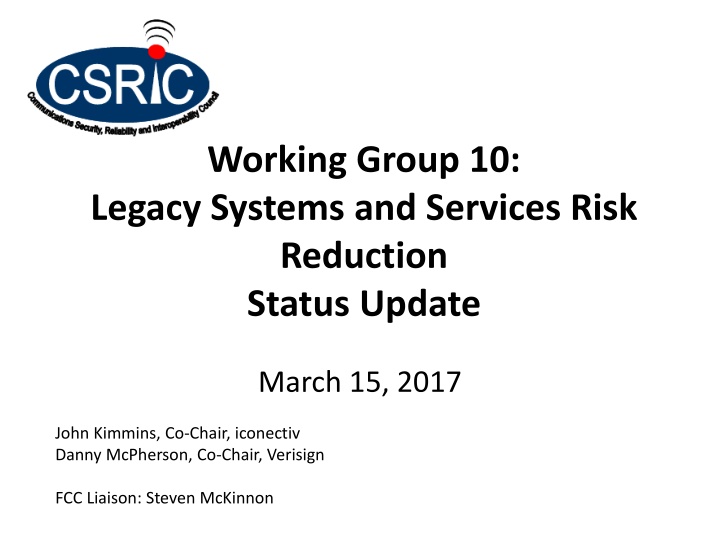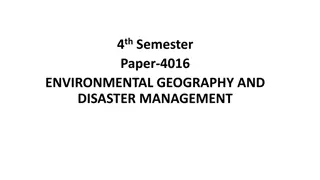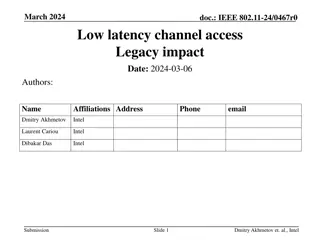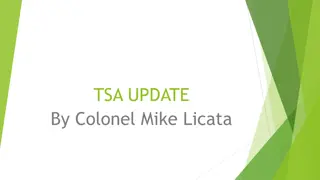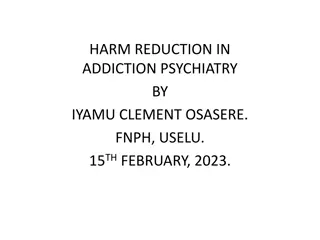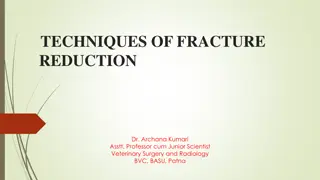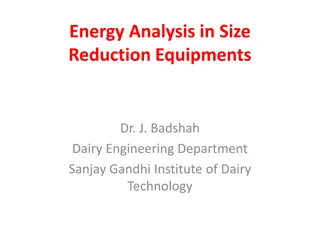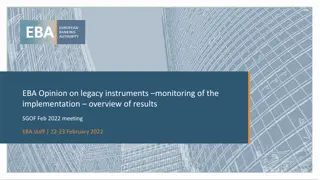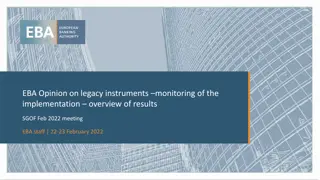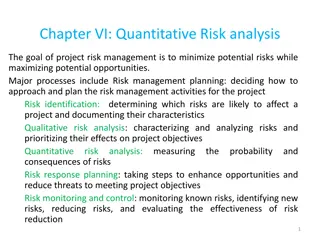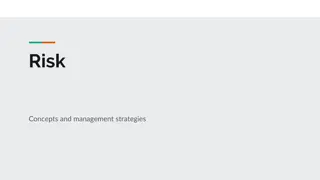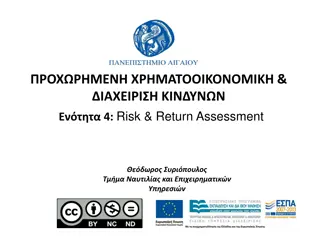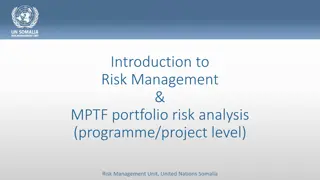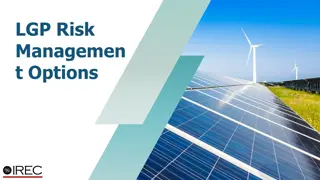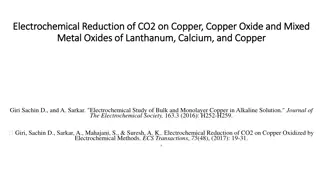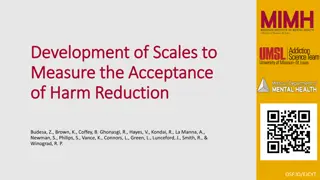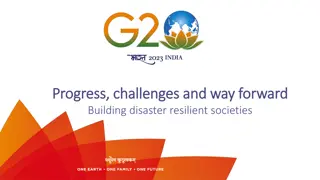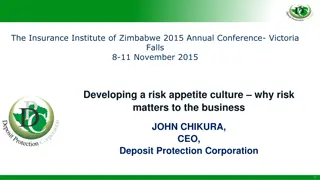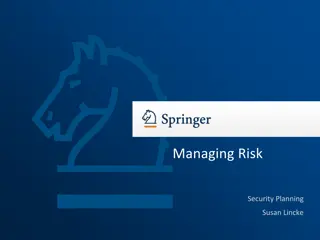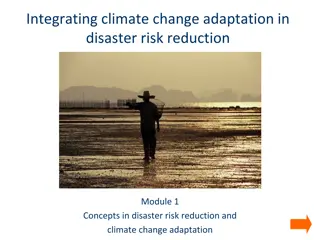Legacy Systems and Services Risk Reduction
In Technology Transitions Order of August 2015, the Commission addresses the shift from TDM-based technologies to all-IP multimedia networks, focusing on the security threats posed by legacy and advanced communications technologies. Specifically, SS7 and other key protocols are examined for vulnerabilities, with assessments and recommendations provided by CSRIC Working Group 10 to the FCC.
Download Presentation

Please find below an Image/Link to download the presentation.
The content on the website is provided AS IS for your information and personal use only. It may not be sold, licensed, or shared on other websites without obtaining consent from the author.If you encounter any issues during the download, it is possible that the publisher has removed the file from their server.
You are allowed to download the files provided on this website for personal or commercial use, subject to the condition that they are used lawfully. All files are the property of their respective owners.
The content on the website is provided AS IS for your information and personal use only. It may not be sold, licensed, or shared on other websites without obtaining consent from the author.
E N D
Presentation Transcript
Working Group 10: Legacy Systems and Services Risk Reduction Status Update March 15, 2017 John Kimmins, Co-Chair, iconectiv Danny McPherson, Co-Chair, Verisign FCC Liaison: Steven McKinnon
WG10 Objectives Working Group Description: In the Technology Transitions Order of August 2015, the Commission notes that communications are rapidly transitioning away from TDM-based technologies to new, all-IP multimedia networks. The intermingling of legacy communications technologies with advanced communications technologies introduces new threat vectors and cyber risk. Recently, this issue has gained greater attention in light of the security threats to Signaling System 7 (SS7) and its IP based version SIGTRAN, a signaling protocol supporting call setup, routing, exchange, and billing functions in communications networks by sending messages between fixed and mobile communications service providers. The scale of SS7, which is used by carriers all over the world, means that every network subscriber could be vulnerable to these security risks. As part of a series of requests to CSRIC, the Commission asked CSRIC to examine vulnerabilities associated with the SS7 protocol and other key communications protocols (e.g., Diameter). CSRIC Working Group 10 will assess existing and potential threats and current defensive mechanisms and make recommendations to the FCC on how to overcome security challenges present in SS7 and other communications protocols used between communications networks and their impact on the transition to next generation networks. The first step is the development of a Risk Assessment and Summary Report as described herein. Deliverables: Risk Assessment and Final Report 2
WG10 Members John Kimmins, Co-chair (iconectiv) Danny McPherson, Co-chair (Verisign) Steven McKinnon, FCC Liaison Name Kathy Blasco Kevin Briggs Shawn Clark Martin Dolly Mark Easley Joshua Franklin John Gallagher Mohammad Khaled Philip Linse Tim Lorello John Marinho Lead Editor Drew Morin Donald Morris-Jones Dave Nolan Nilesh Ranjan Travis Russell Xiaomei Wang Kathy Whitbeck Company DHS DHS Comcast ATIS AT&T NIST Sprint Nokia CenturyLink Seculore Solutions LLC CTIA T-Mobile DHS DHS T-Mobile Oracle Communications Verizon Wireless Nsight Subject Matter Experts (SMEs): Nokia Bell Labs, Silke Holtmanns Security Research Labs, Karsten Nohl Adaptive Mobile, Brian Collins 3
WG10 Final Deliverables Risk Assessment Report December 21, 2016 Restricted Version with Attack Scenarios Public Version with Redacted Sections Summary Report & Recommendations March 2017 4
Risk Assessment Focus Telecom Network & Signaling Technologies Background Threat Landscape Risk Assessment Risk Detection & Mitigation Global Assessment Conclusions 5
Risk Assessment Key Points Overwhelming amount of SS7 traffic is legitimate Assessed different attack methodologies documented & discussed in different settings, e.g., conferences, industry forums Attacks have exploited legacy interconnected trust ecosystem for signaling access More coverage, networks and participants have increased the probability that this trust will be exploited Changing business & geo-political factors have played a role in increasing frequency and volume of targeted attacks 6
Risk Assessment Key Points (Continued) Attack vectors indicate a focus on different motivations including potential tracking, interception, fraud and Denial-of-Service of a targeted individual or groups of individuals Service companies need to be measured in their response to avoid collateral network impacts to legitimate traffic Different products and capabilities have been implemented to counter known attacks Industry groups (e.g., GSMA) and standards forums (e.g., 3GPP) are providing key security guidance and specifications 7
Conclusions & Recommendations Future CSRIC Efforts There are major areas that need further study to identify potentials threats and vulnerabilities and appropriate countermeasures Recommendations for the FCC: FCC should consider the following areas for future CSRIC efforts: Diameter and 5G networks Circles of Trust Non-GSMA signaling systems such as : AIN, SIP, ANSI-MAP 8
Conclusions & Recommendations Signaling Interconnection Monitoring and Filtering Most effective mechanism to mitigate risks and impact Example of one approach to address SS7 attacks Recommendations for Industry: Industry should continue to implement interconnection monitoring and filtering WG endorses GSMA security best practices and guidelines for SS7 and Diameter 9
Conclusions & Recommendations Signaling Aggregators Wider view of traffic originating from domestic and international entities terminating in the U.S. telecommunications network Recommendation for Industry: Industry should engage aggregators in their efforts to address overall signaling security, monitoring and filtering Threat Information Sharing Sharing incidents helps adapt security mechanisms to address evolving attack vectors and support security business cases Recommendations for Industry: Industry should continue to leverage and expand information sharing resources as outlined in WG 5 report Industry should continue efforts regarding automated threat information sharing CTIA sponsored Pilot 10
Conclusions & Recommendations Emerging Diameter & 5G Networks As Diameter and 5G network virtualized infrastructures becomes more widely deployed they will become targets and potentially impact U.S. Critical Infrastructure Recommendation for Industry: Industry should continue to participate in standards forums and adopt GSMA recommended Diameter controls Circles of Trust Trust Groups framework among peer carriers could be beneficial to managing security controls across different interconnection points Recommendation for Industry: Industry should continue to explore further work to identify potential benefits 11
Conclusions & Recommendations Ongoing Security Assessment of Signaling Infrastructure It is important to maintain robust security controls across the carrier s signaling infrastructure Recommendation for Industry: Industry should continue its efforts of ongoing security assessments to detect and mitigate possible threat vectors Subscriber Encryption Support Mobile calls are delivered in the clear and are potentially susceptible to interception Recommendation for Industry: Industry should encourage the use of available encryption technologies for both voice and data communications for highly sensitive applications and VIPs 12
